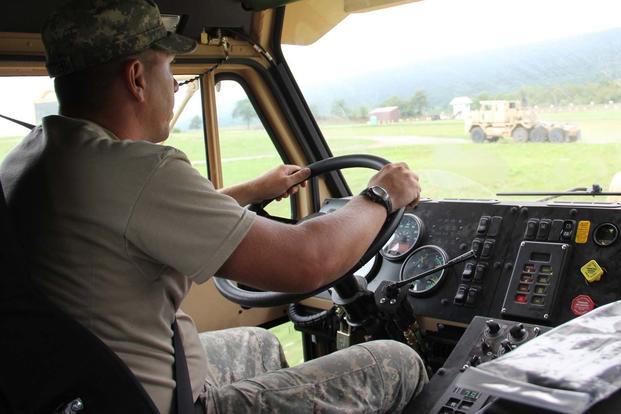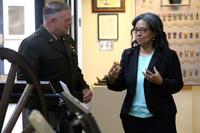The U.S. Army is working to provide more soldiers with civilian credentials so they can find jobs after they leave service in their fields, from truck driving to information technology, an official said.
Acting Army Secretary Robert Speer is poised to issue a directive to expand the service's "Soldier for Life" transition program and improve coordination between the active and reserve components on the process, according to Maj. Gen. Hugh Van Roosen, the service's deputy chief of staff for manpower and personnel plans, programs and policies.
"What we've found is that our efforts are very stovepiped and we have way too many of them," he said Thursday during an event in Washington, D.C., organized by the American Legion.
Van Roosen referenced the case of soldier truck drivers. The Army every year trains thousands of motor transport operators, designated by the military occupational specialty 88M, who drive such vehicles as the Heavy Equipment Transport System, or HETS.
"Is there any reason why we couldn't -- without a whole lot of effort -- include a commercial driver's license in the program?" Van Roosen asked. "We're always struggling with hours in the training day. However, we have to balance that against whatever we can do to ensure a soldier who's leaving has as soft a landing as possible."
Other fields that may lend themselves to civilian credentialing include logistics, mechanics and communications, the general said.
"We're already doing credentialing in our medical fields ... [but] there's a lot of areas, particularly in our IT fields, that we don't do anything like that, and there's not any particularly good reason for it," he said.
Speer, the acting secretary, plans to issue the directive by late March and service officials expect to provide additional guidance to the force by early summer, Van Roosen said. The issue is of interest to Sgt. Major of the Army Daniel Dailey, who recently talked about plans to attract soldiers with college credits and cash incentives, in addition to credentials.
The Legion event coincided with a release of a report funded by Military.com and prepared by Solid LLC, entitled, "The State of Credentialing of Service Members and Veterans: Challenges, Successes and Opportunities."
The document notes the growing awareness among U.S. lawmakers of the need to provide troops with civilian licenses and certifications required for employment.
"America spends hundreds of millions of dollars each year to train service members to do highly skilled jobs ... they should be ready to move into civilian life with [the help of] certifications," Sen. Elizabeth Warren, a Democrat from Massachusetts, said earlier this month during a hearing of the Senate Armed Services Committee's Personnel Subcommittee.
The Senate "wants to work on making it easier for our service members when they leave the service to have that credential in hand and recognized in all 54 jurisdictions of the United States," she added.
The Legion report identified eight opportunities for action: Improve the Post 9/11 GI Bill Licensing and Certification Benefit (to pro-rate the amount charged to the cost of the exam); ensure quality of certification programs; ensure quality of the non-traditional credential preparation programs; better identify labor market demand for credentials; track credential attainment outcomes; reduce state licensure barriers; develop best practices for credentialing service members and vets; and ensure military and veteran interests are represented in civilian workforce credentialing initiatives.
Like others in attendance at the Legion event, Van Roosen noted that only a small fraction of troops -- roughly 15 percent -- retire from the military after 20 years of service.
For the Army, that breaks down to about 10 percent of enlisted soldiers and 30 percent of Army officers, he said. The vast majority of soldiers leave around the five-year mark -- which translates into 135,000 soldiers transitioning out every year, he said.
In addition, most soldiers, about 60 percent, who leave active duty return to their home state, Van Roosen said. Twenty percent relocate to another state and another 20 percent actually stay near the base where they last served, he said.
"It's great to focus at posts, but [with existing transition efforts] we're only touching a small percentage -- the 20 percent who stay there," he said. "That's not enough. We need to go where the soldiers are going."
-- Brendan McGarry can be reached at brendan.mcgarry@military.com. Follow him on Twitter at @Brendan_McGarry.



























